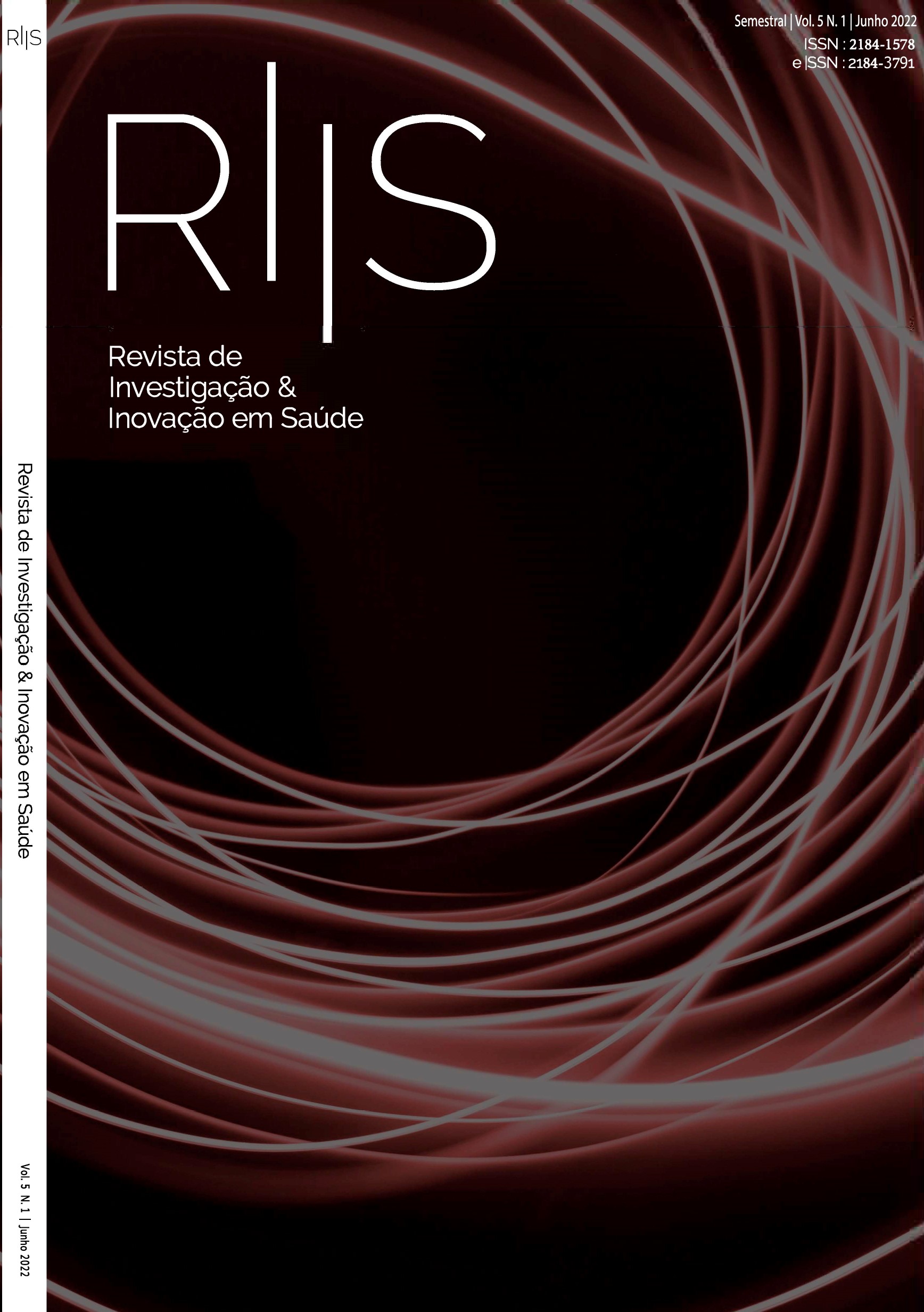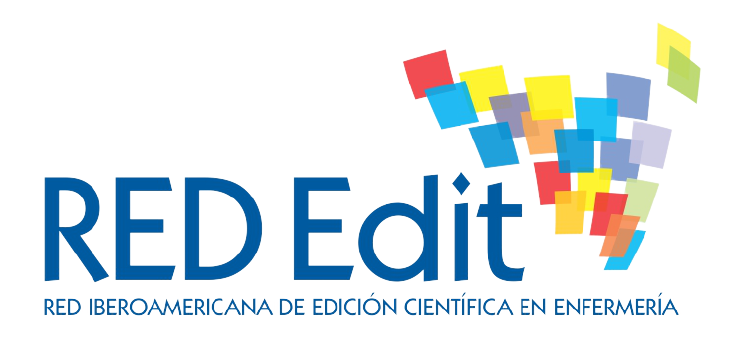Impact of the disclosure of homosexuality on the family: integrative literature review
DOI:
https://doi.org/10.37914/riis.v5i1.153Keywords:
Disclosure, Homosexuality, Family RelationsAbstract
Background: the diversity of human sexuality has caused changes in society. However, homosexuality continues to contain a social taboo within itself, generating different responses in families. Objectives: to analyze the impact caused by the disclosure of an individual's homosexuality on their heterosexual family of origin. Methodology: this is an integrative literature review, according to the PICO methodology, whose data collection was carried out in May 2020, in the SciELO, RCAAP, Cochrane Library, LILACS, PubMed, IBECS and NCBI databases. Results: the analysis of the 5 articles included in the study allowed us to approach the impact of the disclosure of sexual orientation in different contexts: family and work/social, allowing the identification of issues associated with the coming out process. Conclusions: the young people's decision to reveal their sexual orientation to the family is linked to issues of family functionality. Her answers range from acceptance to expulsion/leaving the house, including situations of verbal and physical violence. Given the possibility of a negative reaction from parents, it is essential that health professionals are trained to promote environments capable of reducing negative behaviours/responses. It is also important to normalize different sexual orientations, particularly in schools, to prevent discrimination.
References
Arán, M., & Corrêa, M. V. (2004). Sexualidade e Política na Cultura Contemporânea: o Reconhecimento Social e Jurídico do Casal Homossexual. PHYSIS: Revista Saúde Coletiva, 14(2), 329-341. https://www.scielo.br/pdf/physis/v14n2/v14n2a08.pdf DOI: https://doi.org/10.1590/S0103-73312004000200008
Braga, I. F., Oliveira, W. A., Silva, J. L., Mello, F. C. M., & Silva, M. A. I. (2018). Violência familiar contra adolescentes e jovens gays e lésbicas: um estudo qualitativo. Revista Brasileira de Enfermagem, 71(Suppl. 3), 1220-1227. https://doi.org/10.1590/0034-7167-2017-0307 DOI: https://doi.org/10.1590/0034-7167-2017-0307
Brandão, A. M. (2000). Sexualidades e identidades: reflexões em torno de algumas questões de carácter epistemológico. IV Congresso Português de Sociologia. http://repositorium.sdum.uminho.pt/bitstream/1822/7989/1/Sexualidades%20e%20Identidades.pdf
Carrilho, M. J. (2015). Crianças e adolescentes em Portugal. In Instituto Nacional de Estatística (Ed.) Revista de Estudos Demográficos 55, 53-117 https://www.ine.pt/xportal/xmain?xpid=INE&xpgid=ine_publicacoes&PUBLICACOESpub_boui=224830908&PUBLICACOESmodo=2&xlang=pt
Cascais, A. F. (2017). Hermafroditismo e intersexualidade na fotografia médica portuguesa. Comunicação e Sociedade, 32, 59–79. https://doi.org/10.17231/comsoc.32(2017).2751 DOI: https://doi.org/10.17231/comsoc.32(2017).2751
Cianciotto, J., & Cahill, S. (2003). Education policy: Issues affecting lesbian, gay, bisexual, and transgender youth. The National Gay and Lesbian Task Force Policy Institute.
Corrigan, P. W., & Matthews, A. K. (2003). Stigma and disclosure: Implications for coming out of the closet. Journal of Mental Health, 12(3), 235-248. http://www.brown.uk.com/stigma/corrigan2.pdf DOI: https://doi.org/10.1080/0963823031000118221
Costa, C. B., Machado, M. R., & Wagner, M. F. (2015). Percepções do homossexual masculino: sociedade, família e amizades. Temas em Psicologia, 23(3), 777-788. https://dx.doi.org/10.9788/TP2015.3-20 DOI: https://doi.org/10.9788/TP2015.3-20
Costa, C. G., Pereira, M., Oliveira, J. M., & Nogueira, C. (2010). Imagens sociais das pessoas LGBT. In Comissão para a Cidadania e a Igualdade de Género (Ed.), Estudo sobre a discriminação em função da orientação sexual e da identidade de género 93-147. http://bibliobase.sermais.pt:8008/BiblioNET/upload/PDF2/0892_ESTUDO_ORIENTACAOSEXUAL_IDENTID.pdf
Faro, J. P. (2015). Uma nota sobre a homossexualidade na história. Revista Subjetividades, 15(1), 124-129. http://pepsic.bvsalud.org/scielo.php?script=sci_arttext&pid=S2359-07692015000100014&lng=pt&tlng=pt DOI: https://doi.org/10.5020/23590777.15.1.124-129
Feinstein, B. A., Thomann, M., Coventry, R., Macapagal, K., Mustanski, B., & Newcomb, M. E. (2018). Gay and Bisexual Adolescent Boys' Perspectives on Parent-Adolescent Relationships and Parenting Practices Related to Teen Sex and Dating. Archives of sexual behavior, 47(6), 1825–1837. https://doi.org/10.1007/s10508-017-1057-7 DOI: https://doi.org/10.1007/s10508-017-1057-7
Frazão, P., & Rosário, R. (2008). O coming out de gays e lésbicas e as relações familiares. Análise Psicológica, 1 (XXVI), 25-45. http://www.scielo.mec.pt/pdf/aps/v26n1/v26n1a03.pdf DOI: https://doi.org/10.14417/ap.475
Grafsky, E. L., Hickey, K., Nguyen, H. N., & Wall, J. D. (2018). Youth Disclosure of Sexual Orientation to Siblings and Extended Family. Family Relations, 67(1), 147-160. https://doi.org/10.1111/fare.12299 DOI: https://doi.org/10.1111/fare.12299
Gonçalves, A. O. (2019). Religião, política e direitos sexuais: controvérsias públicas em torno da “cura gay.” Religião & Sociedade, 39(2), 175–199. https://doi.org/10.1590/0100-85872019v39n2cap07 DOI: https://doi.org/10.1590/0100-85872019v39n2cap07
Hernández, L. O., & Torres, M. I. G. (2005). Efectos de la violencia y la discriminación en la salud mental de bisexuales, lesbianas y homosexuales de la Ciudad de México. Cadernos de Saúde Pública, 21(3), 913-925. https://www.scielo.br/pdf/csp/v21n3/26.pdf DOI: https://doi.org/10.1590/S0102-311X2005000300026
Katz-Wise, S. L., Rosario, M., & Tsappis, M. (2016). LGBT Youth and Family Acceptance. Pediatr Clin North Am. Author manuscript, 63(6), 1011-1025. https://www.ncbi.nlm.nih.gov/pmc/articles/PMC5127283/ DOI: https://doi.org/10.1016/j.pcl.2016.07.005
Nascimento, G. C. M., & Comin, F. S. (2018). A Revelação da Homossexualidade na Família: Revisão Integrativa da Literatura Científica. Temas em Psicologia, 26(3), 1527-1541. https://www.scielo.br/pdf/tpsy/v26n3/2358-1883-tpsy-26-03-1527.pdf DOI: https://doi.org/10.9788/TP2018.3-14Pt
Oliveira, J. M. (2010). Orientação Sexual e Identidade de Género na psicologia: Notas para uma psicologia lésbica, gay, bissexual, trans e queer. In C. Nogueira, J. Oliveira (organ.), M. Almeida, C. Costa, L. Rodrigues & M. Pereira, Estudo sobre a discriminação em função da orientação sexual e da identidade de género (pp. 19-44). Comissão para a Cidadania e a Igualdade de Género. http://bibliobase.sermais.pt:8008/BiblioNET/upload/PDF2/0892_ESTUDO_ORIENTACAOSEXUAL_IDENTID.pdf
Patias, N. D., & Hohendorff, J. V. (2019). Critérios de qualidade para artigos de pesquisa qualitativa. Psicologia em Estudo, 24(e43536), 2-14. https://doi.org/10.4025/psicolestud.v24i0.43536 DOI: https://doi.org/10.4025/psicolestud.v24i0.43536
Perucchi, J., Brandão, B. C., & Vieira, H. I. S. (2014). Aspectos psicossociais da homofobia intrafamiliar e saúde de jovens lésbicas e gays. Estudos de Psicologia (Natal), 19(1), 67-76. https://doi.org/10.1590/S1413-294X2014000100009 DOI: https://doi.org/10.1590/S1413-294X2014000100009
Poeschl, G., Venâncio, J., & Costa, D. (2012). Consequências da (não) revelação da homossexualidade e preconceito sexual: o ponto de vista das pessoas homossexuais. Psicologia, 26(1), 33-53. http://www.scielo.mec.pt/scielo.php?script=sci_arttext&pid=S0874-20492012000100003&lng=pt&tlng=pt DOI: https://doi.org/10.17575/rpsicol.v26i1.261
Rodríguez-Bustamante, P., Mayorquin-Muñoz, C. J., Báez-Hernández, F. J., Nava-Navarro, V., & Rico-Pérez, E. (2019). Respuesta familiar ante la revelación de la orientación sexual, desde el discurso de hombres homosexuales. Enfermería Universitaria, 16(3). https://doi.org/10.22201/eneo.23958421e.2019.3.690 DOI: https://doi.org/10.22201/eneo.23958421e.2019.3.690
Rojas, E. B. (2019). Heteronormatividad escolar en México: Reflexiones acerca de la vigilancia y castigo de la homosexualidad en la escuela. Sexualidad, Salud Y Sociedad (Rio de Janeiro), 33, 180–199. https://doi.org/10.1590/1984-6487.sess.2019.33.10.a DOI: https://doi.org/10.1590/1984-6487.sess.2019.33.10.a
Sanches, I. R., Pelissoli, M. S., Lomando, E. M., & Levandowski, D. C. (2017). Rede de apoio social de famílias homoafetivas formadas por mulheres. Gerais: Revista Interinstitucional de Psicologia, 10(2), 176-193. http://pepsic.bvsalud.org/scielo.php?script=sci_arttext&pid=S1983-82202017000200004&lng=pt&tlng=pt
Short, E., Riggs, D. W., Perlesz, A., Brown, R., & Kane, G. (2007). Lesbian, Gay, Bisexual and Transgender (LGBT) Parented Families. The Australian Psychological Society Ltd.
Toledo, E. T. de, & Vimieiro, A. C. (2018). A Vida Sexual, de Egas Moniz: eugenia, psicanálise e a patologização do corpo sexuado feminino. História, Ciências, Saúde-Manguinhos, 25(suppl 1), 69–86. https://doi.org/10.1590/s0104-59702018000300005 DOI: https://doi.org/10.1590/s0104-59702018000300005
Downloads
Published
How to Cite
Issue
Section
License
Copyright (c) 2022 Dora Machado, Manuel Brás, Prof.ª Dr.ª Assunção Almeida, Rui Cordeiro

This work is licensed under a Creative Commons Attribution 4.0 International License.















